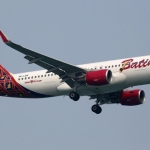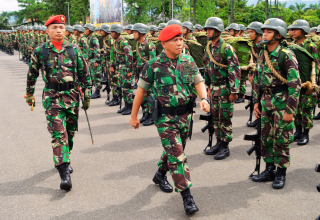
Last updated on March 11th, 2024 at 01:59 pm
A Batik Air flight from Kendari to Jakarta experienced a shocking incident, when both pilots fell asleep mid-air, leaving the plane unattended for about 28 minutes. The incident, which was revealed by a preliminary report from the Indonesian National Transportation Safety Committee (KNKT), exposed the serious issue of pilot fatigue and its impact on aviation safety in Indonesia.
The flight, operated by an Airbus A320 with 153 passengers and six crew members on board, took off from Kendari at 3:05 a.m. local time. About an hour later, the captain asked the first officer for permission to take a nap, which was granted. The first officer then took over the command of the aircraft, but also inadvertently fell asleep shortly after. During this time, the plane deviated from its assigned flight path and altitude, and failed to respond to several calls from the air traffic control. The captain woke up at 4:33 a.m. and realized that the first officer was also asleep. He immediately woke him up, contacted the air traffic control, and corrected the flight path. The plane landed safely in Jakarta at 5:40 a.m. without further incident.
A Common Problem
The incident highlighted the common problem of pilot fatigue, which is defined as a state of reduced mental and physical performance due to lack of sleep or disrupted sleep patterns. Pilot fatigue can impair a pilot’s alertness, judgment, decision-making, and reaction time, and increase the risk of human error and accidents. Pilot fatigue can be caused by various factors, such as long duty hours, irregular schedules, insufficient rest, jet lag, stress, and personal issues.
According to the International Civil Aviation Organization (ICAO), pilot fatigue is one of the most significant threats to aviation safety, and has been a contributing factor in many major accidents and incidents around the world. Some of the notable examples include the Air France Flight 447 in 2009, the Colgan Air Flight 3407 in 2009, and the Air India Express Flight 812 in 2010.
The ICAO has issued guidelines and standards for the management of pilot fatigue, which include the establishment of flight and duty time limitations, the provision of adequate rest periods, the implementation of fatigue risk management systems, and the promotion of fatigue awareness and education. However, the enforcement and compliance of these regulations vary from country to country, and from airline to airline.
Keep Reading
A Call for Action
The KNKT has called for better pilot fatigue monitoring mechanisms, after the investigation of the Batik Air incident. The KNKT has recommended that Batik Air should review and revise its flight and duty time policy, and ensure that its pilots and cabin crew are well-rested before their flights. The KNKT has also suggested that Batik Air should conduct regular cockpit checks and audits, and provide training and counseling for its pilots and cabin crew on fatigue management and prevention.
The Batik Air incident has also raised concerns and criticisms from the public and the media, who have questioned the safety and professionalism of the Indonesian aviation industry. The incident has also prompted the Indonesian government and the aviation authorities to review and improve the existing regulations and standards on pilot fatigue, and to increase the supervision and inspection of the airlines and the pilots.
The Batik Air incident has also served as a wake-up call for the pilots and the airlines, who have to recognize and address the issue of pilot fatigue, and to take the necessary measures to ensure the safety and well-being of themselves and their passengers. The pilots and the airlines have to follow the best practices and guidelines on pilot fatigue, and to report and resolve any fatigue-related problems or incidents. The pilots and the airlines also have to balance their operational and commercial interests with their ethical and social responsibilities.























